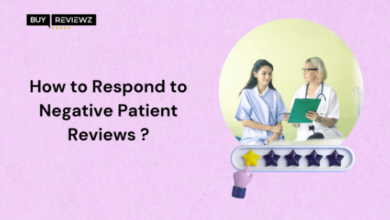ADHD Diagnosis Online Explained: Accurate Assessment and Convenience

Online ADHD diagnosis offers a convenient and confidential way for individuals to assess their symptoms and receive professional evaluation without visiting a clinic in person. Many services provide fast assessments with licensed practitioners, allowing adults and children to get answers and treatment plans efficiently. This approach often eliminates long waits and makes access to care easier, especially for those in remote areas.
Several platforms use validated tools and clinical interviews to ensure a thorough and accurate diagnosis. They typically offer ongoing support, including medication management and recommendations for accommodations in work or school settings. Online ADHD diagnosis can be a practical option for those seeking clarity and treatment with minimal hassle.
Understanding Online ADHD Diagnosis
ADHD diagnosis online involves a structured process using digital tools and expert evaluation. It requires clear criteria to ensure accuracy, offers distinct advantages for access and convenience, and differs in notable ways from traditional in-person assessments.
How Online ADHD Assessment Works
Online ADHD assessments usually begin with detailed questionnaires completed by the individual. These questionnaires cover symptoms related to inattention, hyperactivity, and impulsivity as defined by clinical guidelines.
Following this, a clinician conducts virtual interviews to explore symptom history, impact on daily life, and any coexisting conditions. Some platforms may request input from family members or partners for a fuller picture.
Assessment tools are often validated and designed to identify ADHD patterns reliably. A final diagnosis hinges on combining self-reported data with clinical judgment.
Criteria for Diagnosing ADHD Remotely
Remote diagnosis follows standard diagnostic criteria such as those outlined in the DSM-5. Symptoms must be persistent for at least six months and present in multiple settings, such as work and home.
The clinician also checks for onset before age 12 and significant impairment in social, academic, or occupational functioning. They rule out other conditions that might explain symptoms, like anxiety or mood disorders.
Accurate history-taking and observation during virtual sessions are crucial, since physical exams or neuropsychological tests are less common online.
Benefits of Virtual ADHD Evaluation
Virtual evaluations provide easier access to specialists without long wait times or geographic constraints. This is especially beneficial for individuals in remote or underserved areas.
The comfort of being assessed at home can reduce anxiety and improve honesty during assessment. Online platforms often allow flexible scheduling.
Additionally, some services streamline the process, offering quicker results and less need for multiple visits.
Online vs. In-Person Diagnosis
In-person diagnosis allows for physical exams and direct behavioral observation, which can enhance diagnostic accuracy. It also facilitates immediate testing for conditions with overlapping symptoms.
However, online diagnosis can be equally valid if conducted by accredited professionals following rigorous protocols. It emphasizes convenience and speed but may miss subtle physical or neurological signs.
Choosing between the two depends on individual needs, availability of providers, and symptom complexity. Both methods require professional oversight to ensure reliability.
Choosing an Online ADHD Diagnosis Service
Selecting the right online ADHD diagnosis service involves several important considerations. Careful evaluation of features, direct communication with providers, and understanding privacy protections helps ensure a reliable and secure diagnosis experience.
Key Features to Look For
Services should offer comprehensive assessments conducted by licensed healthcare professionals, such as psychiatrists, psychologists, or nurse practitioners. Availability of medication management, including prescriptions for stimulants, is essential for those needing treatment beyond diagnosis.
Look for platforms that accept insurance or provide clear pricing structures to avoid unexpected costs. A service with quick turnaround times for diagnosis and follow-up is beneficial, reducing the wait from months to days.
Additional support options like personalized treatment plans, academic or workplace accommodation guidance, and ongoing therapy contribute to a better overall experience.
Questions to Ask Providers
Patients should inquire about the qualifications of the diagnosing clinicians and whether the diagnosis process follows established clinical guidelines. It is important to confirm what types of testing and questionnaires are used.
Ask how medication decisions are made, particularly the availability of stimulants like Adderall and whether prescriptions are handled remotely. Clarify the frequency of follow-up appointments and adjustments to treatment.
Inquire whether insurance is accepted and what costs are involved upfront and after diagnosis. Also, understand the support options available post-diagnosis, including therapy and accommodations assistance.
Privacy and Data Security Concerns
Verify that the service complies with relevant healthcare privacy laws, such as HIPAA in the U.S. or PIPEDA in Canada. Data encryption and secure platforms are critical to protect sensitive personal and medical information.
Check the provider’s privacy policy for details on how patient data is stored, shared, and whether information is sold to third parties. Confirm whether the service uses anonymized data for research.
Patients should feel confident that their diagnosis and treatment details are confidential and safeguarded from unauthorized access throughout the process.





